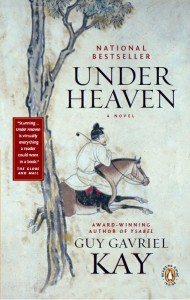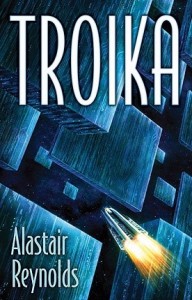 Via Locus Online:
Via Locus Online:
Best Novel
- Zoo City, Lauren Beukes (Jacana South Africa; Angry Robot)
- The Hundred Thousand Kingdoms, N.K. Jemisin (Orbit)
- The Silent Land, Graham Joyce (Gollancz; Doubleday)
- Under Heaven, Guy Gavriel Kay (Viking Canada; Roc; Harper Voyager UK)
- Redemption In Indigo, Karen Lord (Small Beer)
- Who Fears Death, Nnedi Okorafor (DAW)
Best Novella
- Bone and JewelCreatures, Elizabeth Bear (Subterranean)
- The Broken Man, Michael Byers (PS)
- “The Maiden Flight of McCauley’s Bellerophon”, Elizabeth Hand (Stories: All-New Tales)
- The Thief of Broken Toys, Tim Lebbon (ChiZine)
- “The Mystery Knight”, George R.R. Martin (Warriors)
- “The Lady Who Plucked Red Flowers beneath the Queen’s Window”, Rachel Swirsky (Subterranean Summer 2010)
Best Short Fiction
- “Beautiful Men” , Christopher Fowler (Visitants: Stories of Fallen Angels and Heavenly Hosts)
- “Booth’s Ghost”, Karen Joy Fowler (What I Didn’t See and Other Stories)
- “Ponies”, Kij Johnson (Tor.com 11/17/10)
- “Fossil-Figures”, Joyce Carol Oates (Stories: All-New Tales)
- “Tu Sufrimiento Shall Protect Us”, Mercurio D. Rivera (Black Static 8-9/10)
Best Anthology
- The Way of the Wizard, John Joseph Adams, ed. (Prime)
- My Mother She Killed Me, My Father He Ate Me, Kate Bernheimer, ed. (Penguin)
- Haunted Legends, Ellen Datlow & Nick Mamatas, eds. (Tor)
- Stories: All-New Tales, Neil Gaiman & Al Sarrantonio, eds. (Morrow; Headline Review)
- Black Wings: New Tales of Lovecraftian Horror, S.T. Joshi, ed. (PS)
- Swords & Dark Magic, Jonathan Strahan & Lou Anders, eds. (Eos)
Best Anthology
- What I Didn’t See and Other Stories, Karen Joy Fowler (Small Beer)
- The Ammonite Violin & Others, Caitlín R. Kiernan (Subterranean)
- Holiday, M. Rickert (Golden Gryphon)
- Sourdough and Other Stories, Angela Slatter (Tartarus)
- The Third Bear, Jeff VanderMeer (Tachyon)
Best Artist
- Vincent Chong
- Kinuko Y. Craft
- Richard A. Kirk
- John Picacio
- Shaun Tan
Special Award, Professional
- John Joseph Adams, for editing and anthologies
- Lou Anders, for editing at Pyr
- Marc Gascoigne, for Angry Robot
- Stéphane Marsan & Alain Névant, for Bragelonne
- Brett Alexander Savory & Sandra Kasturi, for ChiZine
Special Award, Non-Professional
- Stephen Jones, Michael Marshall Smith, & Amanda Foubister, for Brighton Shock!: The Souvenir Book Of The World Horror Convention 2010
- Alisa Krasnostein, for Twelfth Planet Press
- Matthew Kressel, for Sybil’s Garage and Senses Five Press
- Charles Tan, for Bibliophile Stalker
- Lavie Tidhar, for The World SF Blog
As always, good to see so many great authors and industry folk represented. Really hope that ‘The Mystery Knight’ by George R.R. Martin wins the award it’s up for. Under Heaven has my easy vote for best novel.
Thoughts?



